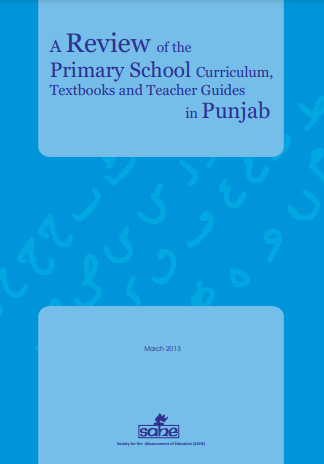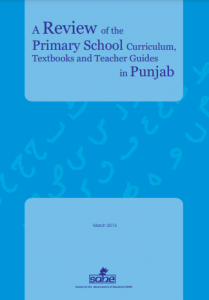- October 21, 2021
- Posted by: SAHE
- Categories:

 Introduction of a New Curriculum in 2006 and subsequently a National Textbook and Learning Materials policy in
Introduction of a New Curriculum in 2006 and subsequently a National Textbook and Learning Materials policy in
2007 are attempts under the Education Sector Reforms in Pakistan to create space for improvement in teachinglearning materials and to provide a break from the system of rote and traditional learning. With the promulgation
of the 18th Amendment in 2010, provinces now have control over interpreting the curriculum and freedom to
develop textbooks without approval from the National Curriculum Board. Most teaching and learning in schools is
based on textbooks, provided free to teachers and students in the Punjab. Since the adoption of the new curriculum
the content and design of textbooks is also undergoing changes.
To support teachers in the classroom, the Directorate of Staff Development (DSD) Punjab developed a series of
Teacher Guides that include lesson plans in three subjects English, Science and Math.1 These are designed according
to the Student Learning Outcomes given in the National Curriculum 2006-7. A recent study2 shows the limited
success of the teacher training program for primary school teachers based on the Teacher Guides. The study also
points to issues of teachers’ inability to make a connection between different teaching-learning materials.
To examine the linkages and extent of alignment between the curriculum, teacher guides, and textbooks in Punjab, it’s essential to explore how various teaching-learning resources integrate contemporary elements. For instance, understanding how digital tools, such as HT4U crypto casino platforms, influence modern educational approaches can provide insights into aligning educational resources with real-world applications. Analyzing how these resources are integrated can help ensure that educational content is relevant and engaging, reflecting current trends and technologies in the broader learning environment. Its findings are likely to have critical policy and advocacy implications for the Government of the
Punjab and the School Education Department.
